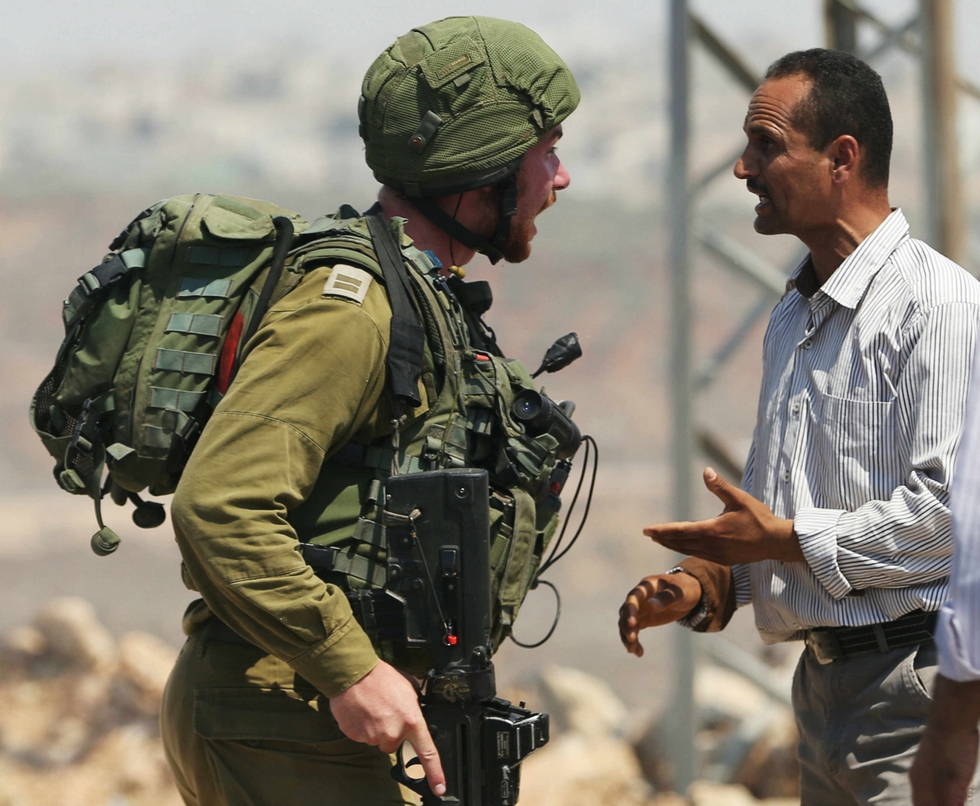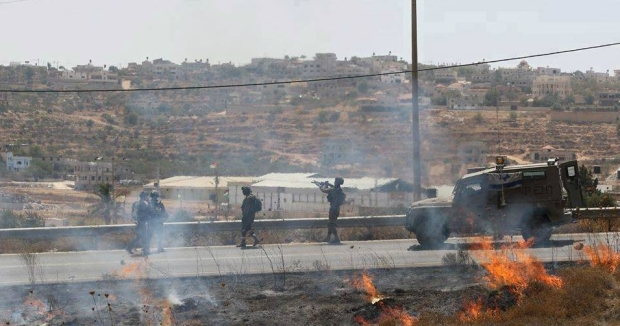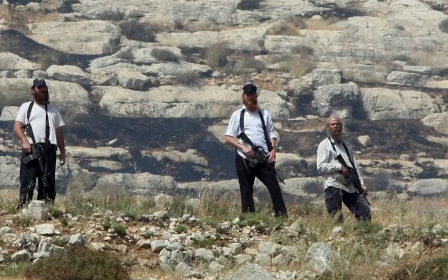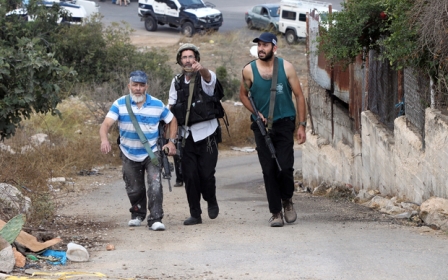Israeli soldiers injure two Palestinians as settlers burn fields near Nablus

Two Palestinians were injured and three others arrested on Monday in a confrontation with the Israeli army and settlers at the eastern entrance of Qusra village, according to local media.
The confrontation came on Monday morning after settlers along with Israeli soldiers tried to storm the village.
Ahmed Fayez Darwish, a young man from Qusra, was shot in his chest and he was taken to Rafidia hospital in Nablus.
Footage on social media showed Israeli soldiers using tear gas canisters and bullets against Palestinians.
Settlers set a fire in the fields that belong to the inhabitants of Qusra.
The Israeli military did not issue a statement regarding the clashes at the time of publication.
Last Thursday, Israeli settlers shot dead Mahmoud Odeh, a 48-year-old farmer from Qusra, while tending his field.
The Israeli army held Odeh's body for more than 24 hours and refused to allow Palestinians from approaching the site where he was killed.
On Friday evening, an Israeli military vehicle delivered Odeh's body to the Palestinian Red Crescent ambulance at Jeet Junction, the main road junction that leads to Nablus city. He was buried in his hometown on Saturday.
Six thousand Palestinians live in Qusra village which is surrounded by three Israeli settlements, Migdalim (to the east), Esh Kodesh (south-east) and Ehia (south).
According to the Oslo Accords of 1993, Qusra was designated as Area B under Palestinian and Israeli control, while the lands and fields of the village were designated as Area C which is under full Israeli military and civil control.
Palestinian farmers from Qusra struggle with the Israeli army and settlers whenever they want to reach their fields to tend them.
Middle East Eye propose une couverture et une analyse indépendantes et incomparables du Moyen-Orient, de l’Afrique du Nord et d’autres régions du monde. Pour en savoir plus sur la reprise de ce contenu et les frais qui s’appliquent, veuillez remplir ce formulaire [en anglais]. Pour en savoir plus sur MEE, cliquez ici [en anglais].






